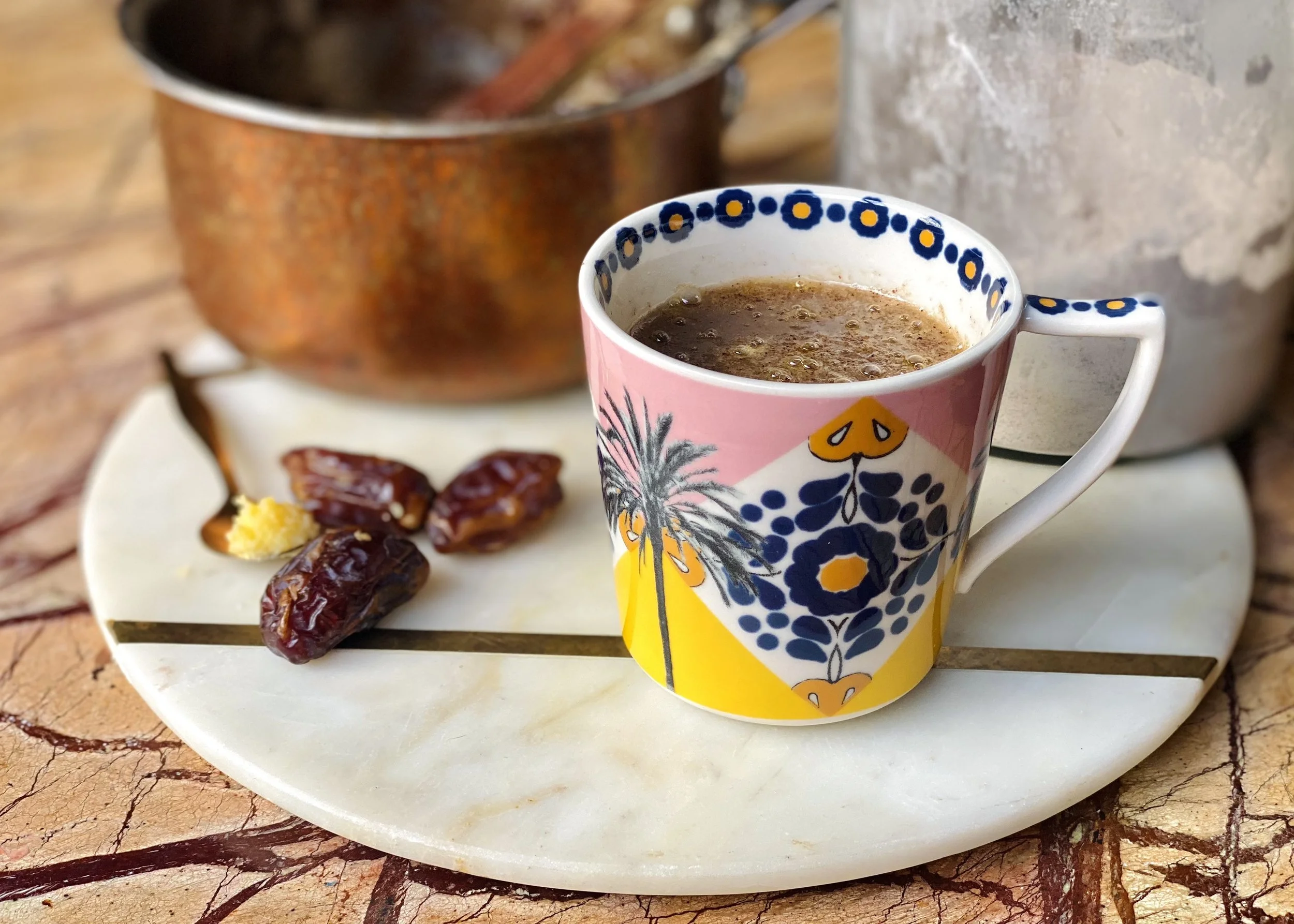RAGI MALT
I love everything about this recipe, including the name. I knew I’d love Ragi Malt before I’d even tasted it! Now it’s right up there with my list of favourite hot drinks, from the much loved in the wellness space Moon Milks, to “Golden Milk” (the hip name for Haldi Doodh) to hot chocolate and lattes. There’s something about a smooth, comforting, sweet-but-not-too-sweet drink that just satisfies late-night tummy grumblings or a hankering for a post-meal something-or-other that hits the spot when your lunch feels like it didn’t.
As well as being a delicious drink, Ragi Malt has also become a light go-to breakfast for me — kind of a hot smoothie. Its high fibre content makes it nourishing and satiating for those days when a porridge feels too heavy, and an easy-to-digest bedtime drink if you suddenly get the munchies before bed.
Ragi is a little reddish-brown seed within the millet family. Known in India as Finger Millet or African Millet, it’s an important crop in Africa and Asia — one of the many members of the millet family and quite different, I find, from the more common pale yellow millets that you might find at your local health food store. Naturally gluten-free, ragi is rich in iron and calcium and favoured for babies for their bones, teeth and iron levels, as well as postpartum mothers, and it is believed that the regular consumption of ragi helps women to combat osteoporosis and keep their bones strong.
Traditionally made in India from sprouted flour, I buy my ragi flour pre-ground to make porridge or this ragi malt, or add to homemade breads, biscuits and pancakes. Ragi flour is grey and mottled in appearance, and can take a lot of flavour, so I spice it up and add some jaggery to sweeten it. It’s especially good if you take the extra time to dry toast or roast it in ghee first.
I team this drink with a splash of plant milk and a good dash of cinnamon, cardamom and ginger and just enough jaggery. Some Indian recipes add powdered almonds to make it more nutritious. You can make this drink even more filling by cooking it with dairy milk — cooking the dairy milk, as per Ayurveda, makes it much more digestible so I’ve included a method below for this too. Ragi is quite drying, so milk-free ragi is a great option for balancing the luscious Kapha vibes of winter, but to make it more unctuous for Vata imbalance add a teaspoon of ghee. Read on for how I currently make my ragi malt.
INGREDIENTS
Serves 1 as a thick breakfast drink or 2 as a creamy hot drink
4 tbsp ragi flour
1 cup whole milk (preferably unhomogenised and unpasteurised) or a splash of plant milk
1½ cups water
Jaggery/demerara sugar/maple syrup to taste
Ground cinnamon to taste*
Ground cardamom to taste
Ginger
Optional:
1 tsp ghee
Ground almonds/almond powder
If using dairy milk:
Add one cup of water to a small pan FIRST (this technique helps prevent the milk sticking to, or scalding, the bottom of the pan) followed by the cup of milk, stir and bring to a rolling simmer.
In a small bowl, whisk the ragi flour with half a cup of water until smooth and add to the hot milk in the pan.
Cook on medium-high heat for 10-15 minutes until thick and glossy, stirring continuously to prevent it sticking and lumps from forming.
Add jaggery to taste (I use 1- 2 tsp) and a splash of hot water if needed to get your desired consistency (I add about a cup to make it a silky hot drink for two but leave as is for a creamy breakfast for one).
Serve immediately or, in warmer months, allow to cool and serve at room temperature if you like.
If using plant milk:
Whisk the ragi flour, with half a cup of water in a small pan until smooth, then add two more cups of water and bring to a rolling simmer.
Cook on medium-high heat for 10-15 minutes until thick and glossy, stirring continuously to prevent it sticking and lumps from forming.
Add jaggery to taste (I use 1- 2 tsp), a dash of plant milk and splash of hot water and if needed to get your desired consistency (I use half a cup of each to serve two people).
Serve immediately or, in warmer months, allow to cool and serve at room temperature if you like.
East by West tips
You can skip the jaggery and serve it with chopped dates for texture or cook it with dates for sweetness.
*You can add a small piece of cinnamon bark/stick and a couple of crushed cardamom pods when you simmer the ragi instead of using ground — just remember to fish them out.
If you’re after more hot drinks like this one, check out the red velvet beetroot latte, masala chai or Golden Milk.
If you love the taste of ragi, try these pancakes with almond cream and cooked fruit.

